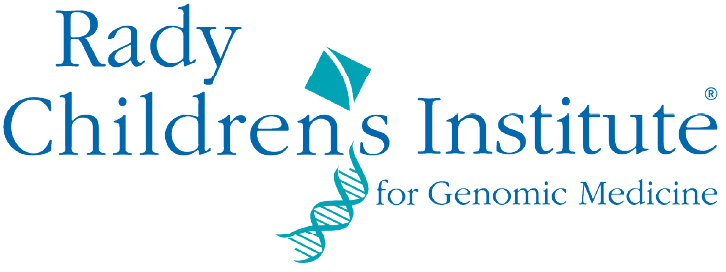New Research Published in Nature Offers Hope for Understanding and Preventing Common Birth Defect
San Diego—April 1, 2025– Scientists at Rady Children’s Institute for Genomic Medicine, and the Department of Neurosciences and Pediatrics at the University of California, San Diego, have made a significant breakthrough in understanding the causes of spina bifida, a serious birth defect affecting thousands of newborns each year. The new study, published this week in Nature, reveals critical insights into how this condition develops and opens the door for potential future treatments.
Spina bifida, or meningomyelocele, occurs when the spine and spinal cord do not form properly during early pregnancy. Most often identified during prenatal ultrasound, the condition can lead to lifelong disabilities of the lower limbs and bladder. Newborn sequencing is not routinely used in this condition because causes remain unknown. While researchers have long understood certain environmental risk factors, the new study provides a deeper look into the molecular mechanisms underlying the condition.
“Our research identifies specific steps in embryogenesis that contribute to spina bifida,” said Dr. Joseph Gleeson, senior author of the study and professor at Rady Children’s and UC San Diego. “This is a major step forward in understanding why this condition occurs and how we might one day prevent it.”
New Insights into Spina Bifida’s Origins
The study made a bold assertion, considering that new DNA mutations, not present in mother or father, contribute to the cause. Testing this assertion required that individuals with spina bifida and their parents volunteer for the study. To achieve sufficient families for study, the authors established the Spina Bifida Sequencing Consortium, with support from the National Institutes of Health (NIH). This allowed aggregation of both older and younger individuals from across the globe.
“Combining the DNA mutations revealed functional modules that contribute to disease risk,” said Dr. Sangwoo Kim, co-senior author and Professor at Yonsei University College of Medicine, Republic of Korea. Researchers found that nearly a quarter of patients have such new mutations that contribute to risk of disease, and that these mutations impact how cells within the embryo connect to one another. These findings challenge previous assumptions and show that many patients have a single gene that is likely the cause.
One of the most exciting aspects of the study is its potential impact on early diagnosis and intervention. “Our results identifying genetic risk factors can now be used to develop new screening tools to achieve more accurate and earlier diagnosis, and possibly predict the degree of disability,” said first author Dr. Yoo-Jin Ha, affiliated with both UC San Diego and Yonsei.
Hope for Future Treatments
Beyond improving diagnosis, this research paves the way for potential treatments. The study suggests that new approaches to study causes using stem cell models could be used to advance novel interventions such as gene therapy, targeted drugs, or nutritional interventions. While folic acid is established as an important risk factor, the results offer a promising avenue for further reducing the severity or even preventing spina bifida altogether in the future.
“This discovery brings us closer to one day being able to intervene before the condition develops,” said Dr. Gleeson. “Currently fetal surgery to correct the condition after it starts has shown promise in reducing disease severity. While more research is needed, our findings provide a new foundation for exploring possible prevention.”
Looking Ahead
The research team plans to build on these findings by incorporating even more powerful DNA mutation detection methods, in collaboration with the Spina Bifida Sequencing Consortium, and the Spina Bifida Association. They are hopeful that continued research will lead to medical advances that could significantly reduce the impact of spina bifida on families worldwide.
This study was made possible through support from the NIH and Rady Children’s Institute for Genomic Medicine, and involved collaboration with experts and physician scientists at more than 30 institutions.
For more information, the full study can be found in Nature https://doi.org/10.1038/s41586-025-08676-x.
###
About Rady Children’s Institute for Genomic Medicine
Founded in 2014, Rady Children’s Institute for Genomic Medicine (RCIGM) pioneered a medical revolution through its record-breaking rapid Whole Genome Sequencing™ test that endeavored to end the diagnostic odyssey for neonatal and pediatric rare disease patients and their families. Now the Institute is moving to end the therapeutic odyssey by pinpointing the root cause of previously unidentified conditions. RCIGM scientists and innovators work on translating discoveries into therapies and tools to guide clinical decision-making for providers at the bedside. The Institute’s research into the use of rWGS® in a clinical NICU setting continues to lay the groundwork for systemic changes in pediatric healthcare. RCIGM is a non-profit research organization embedded within Rady Children’s Hospital San Diego, Learn more at RadyGenomics.org and follow us LinkedIn.

